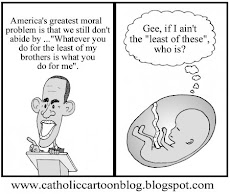In the afterword to the paperback edition, Shlaes sums up her conclusion as follows:
But what really stands out when you step back from the 1930s picture is not how much the New Deal public works achieved. It is how little. Notwithstanding the largest peacetime appropriation in the history of the world, the New Deal recovery remained incomplete right through the 1930s. From 1934 on - the period when the spending ramped up - monetary troubles remained. But they could not take all the blame for the Depression. The story of the mid-1930s is the story of a heroic economy struggling to recuperate but failing to do so because of perverse federal policy. the worst factor was Roosevelt's war on business. But one can also make the argument that lawmakers' preoccupation with public works got in the way of allowing productive businesses to expand and pull the rest forward.Blaming business and fanning the flames of class warfare are the strategies of the Obama administration, as we saw in the past week in their unbelievable cynical attacks on the Chamber of Congress. When business understandably becomes nervous about investing, the economy gets worse and the attacks are stepped up. A vicious cycle is created. This recession will not end until the Democrats are out of power and confidence in a stable regulatory and tax environment is restored.
Shlaes' book contains so many parallels between the 30s and the past few years that it is almost depressing. Obama does not have a single new idea; everything he proposes comes out of the failed playbook of Hoover, who made the Depression possible, and Roosevelt, who unnecessarily prolonged it. How he can accuse his political opponents of wanting to go back to the past with a straight face is impossible to understand.





4 comments:
I'd be curious to know on what basis Shlaes levels these accusations. I mean Conrad Black seems to have a positive view of FDR - hardly what I would consider a friend of big government.
Another interesting book is New Deal or Raw Deal, and it looks as though a couple of books are coming out soon on Calvin Coolidge, who is one of my favorite presidents.
Dan,
Shlaes isn't just leveling accusations. She is writing an interpretation of the Great Depression and her whole book is her argument.
I suppose the fundamental fact in need of explanation is that the GD went on for a decade with no signs of ending despite a gigantic increase in of government spending and the implementation of Kenyesian solutions. The more business was blamed, shamed and taxed, the worse things got. So how do you explain that basic fact?
That's not in fact what happened though. The economy - by most indicators - bottoms out around the time that FDR takes office. By about '36 GDP is returning to pre-crash levels. This may have happened largely with or without any of FDR's actions, but that's what happened. From FDR's inauguration it took three years for economic indicators to return to 1929 levels.
Post a Comment